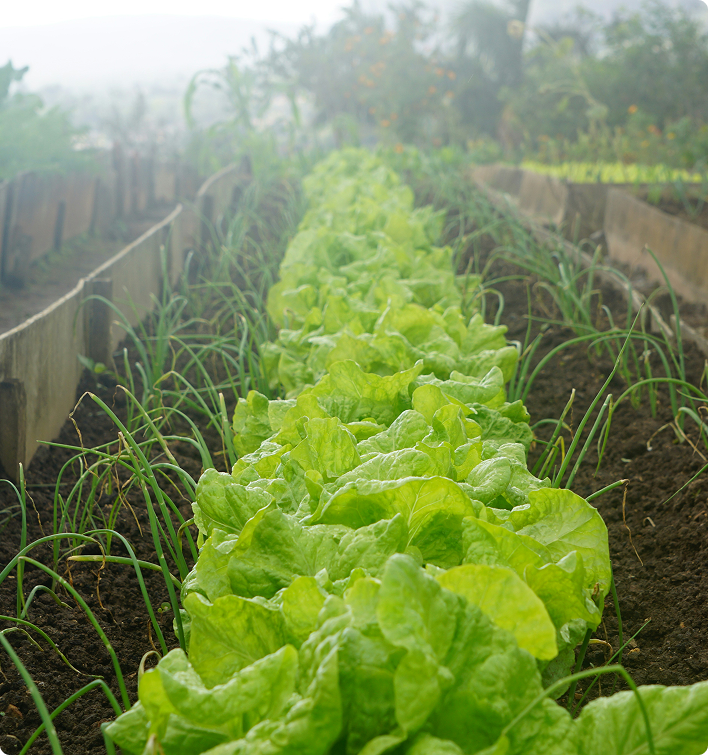Peppers love the company of marigolds, and for good reason. Marigolds are like the garden’s natural bouncers, warding off nematodes and other underground pests. They’ll help your peppers thrive while adding a pop of sunny color to your garden.
5. Corn, Beans, and Squash (The Three Sisters)
This Native American planting trio is the OG of companion planting. Corn provides a natural trellis for the beans, beans fix nitrogen in the soil to feed the corn and squash, and squash shades the soil to retain moisture and keep weeds away. It’s teamwork at its finest.
6. Lettuce and Radishes
Lettuce and radishes are the ultimate fast-food pairing—but for your garden. Radishes grow quickly, breaking up the soil and making room for your lettuce’s roots to spread. Plus, they’ll be ready to harvest long before the lettuce needs the space.
7. Broccoli and Calendula
Broccoli’s rich, leafy greens are a magnet for pests, but calendula can help. These cheerful flowers attract beneficial insects like ladybugs and hoverflies that prey on aphids and caterpillars. Plant them together, and you’ve got a pest-control plan that’s as natural as it gets.
8. Strawberries and Spinach
Who says you can’t mix fruits and veggies? Strawberries and spinach are besties in the garden. Spinach grows low to the ground, providing a natural mulch to keep strawberries’ roots cool and moist. Meanwhile, strawberries don’t mind sharing their sunlight.
9. Zucchini and Borage
Zucchini and borage make an underrated yet effective pair. Borage attracts pollinators like bees and deters pests like squash borers. Plus, its star-shaped blue flowers add a touch of whimsy to your garden while keeping your zucchini plants productive.
10. Potatoes and Beans
Potatoes and beans are a power couple for soil health. Beans fix nitrogen in the soil, which potatoes love, and their shared space maximizes efficiency in your garden. Together, they create a sustainable and hearty pairing.
Top 10 Combinations to Avoid
While some plants thrive together, others can be total garden frenemies. Here are the top combinations to avoid:
Tomatoes and Corn:
Both attract the same pests, like the tomato hornworm and corn earworm.
Carrots and Dill:
Dill can stunt carrot growth, especially if it matures and starts dropping seeds nearby.
Cucumbers and Potatoes:
These plants compete for the same nutrients and are prone to similar diseases, making them bad neighbors.
Peppers and Fennel:
Fennel’s root secretions can inhibit the growth of most plants, including peppers.
Beans and Onions:
Onions release compounds into the soil that can stunt bean growth.
Broccoli and Strawberries:
These two compete for nutrients and space, making it hard for either to thrive.
Lettuce and Garlic:
Garlic can inhibit the growth of lettuce, leaving it stunted and unhappy.
Zucchini and Potatoes:
Both are heavy feeders and can deplete soil nutrients quickly when grown together.
Corn and Celery:
They have similar nutrient needs and don’t complement each other’s growth patterns.
Radishes and Hyssop:
Hyssop can interfere with radish growth, leading to smaller roots and lower yields.
Tips for Successful Companion Planting
Mix it up:
Avoid planting large blocks of a single crop. Companion planting works best when plants are intermingled.
Rotate your crops:
Even the best pairings need a change of scenery to prevent soil depletion and pest buildup.

